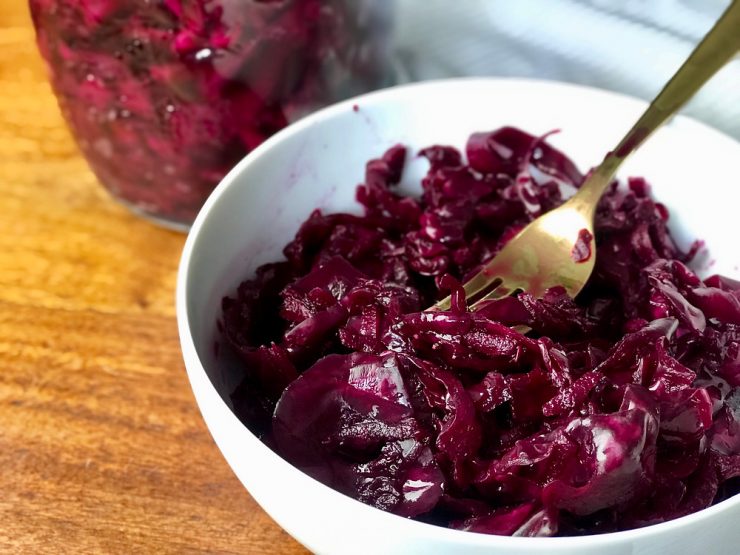
I don’t think anyone really knows what the term “superfood” means, but if I had to pick two healthy foods to try to market to you it would be beets and probiotics. What if you could have both in one bowl? Well, now you can! Sauerkraut is delicious, and so are beets. Sometimes beets can be a little too beet-y, so the great thing about fermenting them is it makes the flavor a little less intense and a little more tangy. Plus beets are high in folate, amino acids, fiber, and potassium. They’re good for your liver, your brain, and your blood pressure. Fermented foods help promote growth of good bacteria in your gut. Even if you hate sauerkraut, stop complaining and do something good for yourself! This is how we made it:
Ingredients:
3-4 beets, washed, trimmed, and grated
1 head red cabbage, quartered and then thinly sliced, leaving a couple of large leaves aside
2 cloves garlic, minced
1 tbsp sea salt
Water (if needed)
Directions:
Place grated beets and cabbage in a large bowl, and sprinkle with salt. Place a large plate on top of it, and use something heavy like a cookbook or cans of tomatoes to smash down the cabbage and beets helping the salt get some of the water out. Let it sit for 30 minutes, and go catch up on Kimmy Schmidt while enjoying some “me” time.
Come back to your bowl of stains waiting to happen, and massage in the salt. Now is also a good time to add your garlic. Massage it for a good 10 minutes, and it should start getting a little juicy. Place the plate with weights back on top, head back to Kimmy Schmidt.
Now you should have some nice, beety liquid at the bottom of your bowl. Using a couple of big mason jars or a few smaller ones, pack in the beet and cabbage mixture using or mortar or wooden spoon. Leave an inch of space between the top of the mix and the top of the jar as your sauerkraut will expand and breathe a bit as it sits. Top it off with liquid. Now, it’s quite possible you do not have enough liquid to cover the entire mix, and that would mean you would ruin this beautiful red kraut! If this is the case, make some brine by mixing 4 cups of salt to 1 tbsp of water. Fill the kraut with enough liquid to just cover, and then place a piece of the reserved cabbage leaf on top to keep your sauerkraut from oxidizing. Seal the jars up, and store them someplace out of direct light.
You are now going to let your sauerkraut sit and ferment for about 7-14 days. The fermentation process will create air to build up in your jars, so it’s recommended that you “burp” your jar by unscrewing the lid over a sink every couple of days. After 7 days, test your kraut for tanginess. I like mine best around 10-14 days, but your fermentation time will depend on how warm it is in your house.
Perhaps you’d like to serve your delicious kraut with some homemade, gluten free pierogies!
Loving our kraut? Tag us in your photo on Instagram @notthatkindofveganofficial or on Facebook for a shoutout!




























Add comment